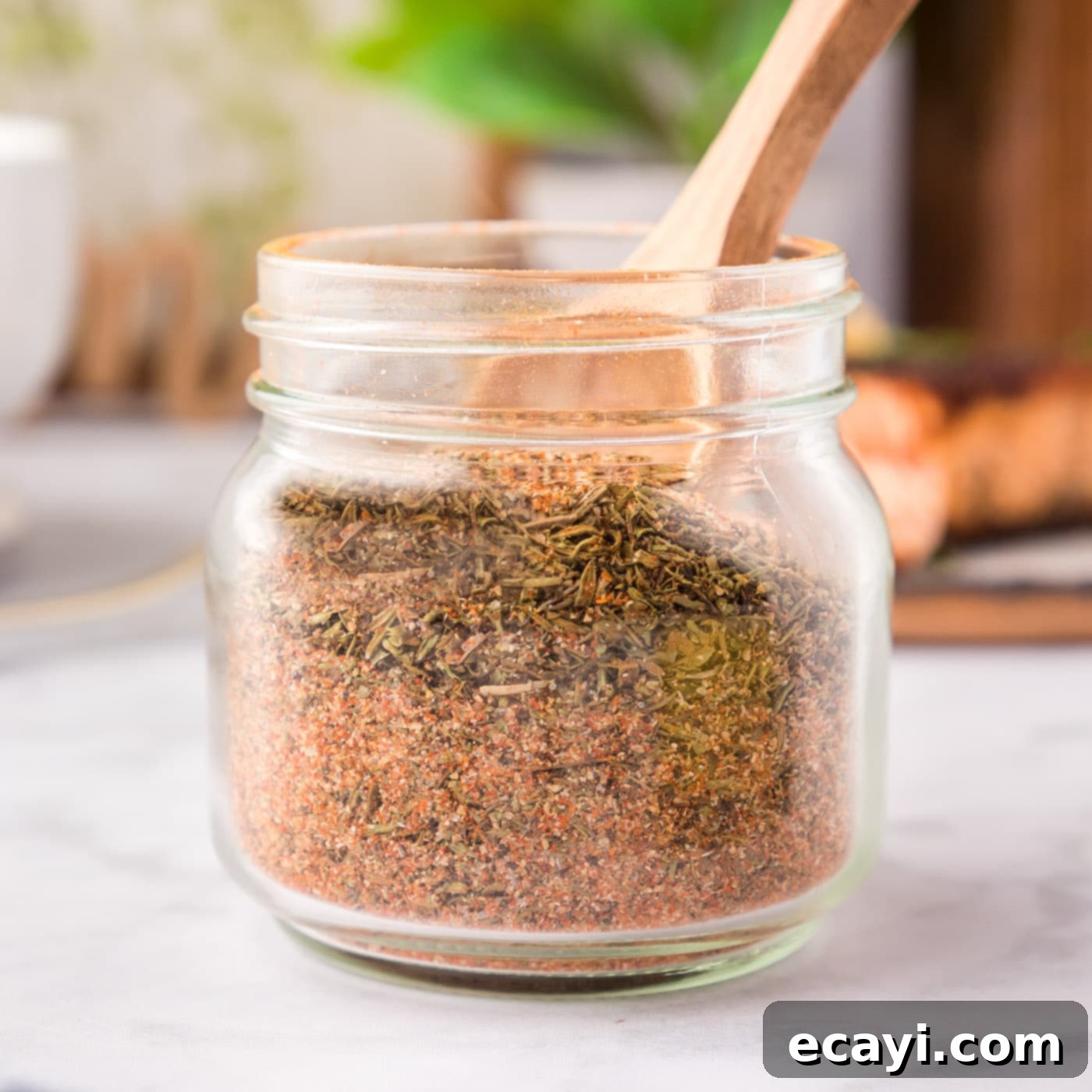Homemade Cajun Seasoning: Your Ultimate Guide to a Bold, Flavorful, and Customizable Spice Blend
Unlock a world of vibrant flavors with this exceptional homemade Cajun seasoning recipe. Crafted from a versatile blend of common spices, this mix allows you to infuse an authentic taste of Louisiana into virtually any dish – from succulent proteins and fresh vegetables to hearty grains and comfort foods. Forget bland, store-bought alternatives; creating your own Cajun blend ensures unparalleled freshness, potency, and the freedom to tailor the spice level precisely to your palate.
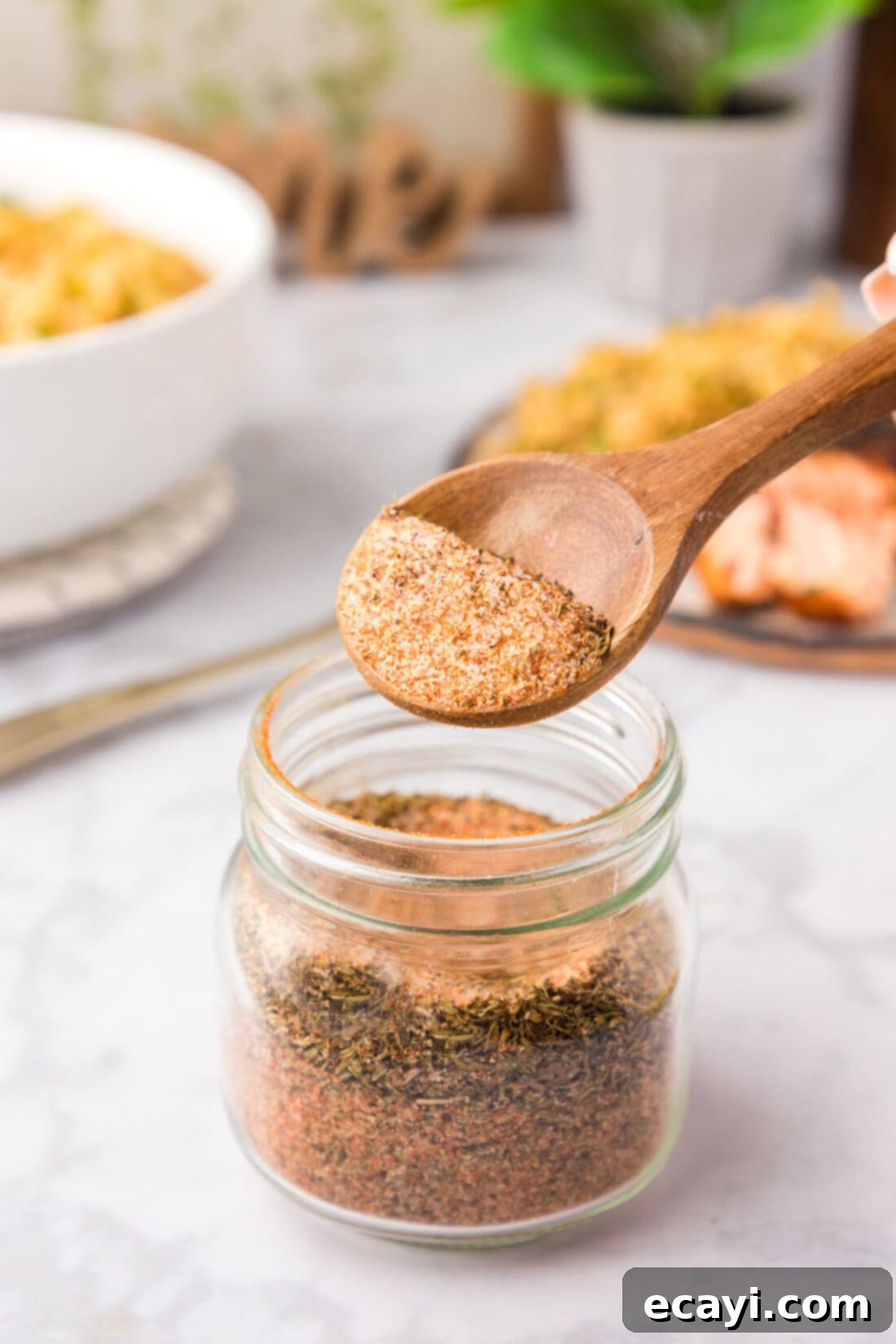
Why Homemade Cajun Seasoning Outshines Store-Bought
There’s a significant difference between a homemade Cajun seasoning and its pre-bottled counterparts. Once you experience the depth of flavor and aroma from freshly mixed spices, you’ll rarely go back. This recipe empowers you with complete control, allowing for a truly personalized culinary experience. Here’s why making your own Cajun seasoning is a game-changer:
- Unmatched Freshness and Potency: Store-bought seasonings can sit on shelves for extended periods, causing their volatile oils and aromas to diminish. By blending your own, you’re guaranteed the freshest, most potent spices, resulting in a significantly more flavorful dish.
- Customization at Your Fingertips: This is arguably the biggest advantage. Love a fiery kick? Amp up the cayenne. Prefer a milder profile? Scale it back. Concerned about sodium intake? Easily reduce the salt content without compromising on taste. You can also experiment with additional herbs like oregano or adjust ratios to perfectly suit your family’s preferences.
- No Unwanted Additives: Many commercial spice blends contain anti-caking agents, preservatives, or excessive amounts of salt. When you make it yourself, you know exactly what goes into your seasoning – pure, unadulterated spices.
- Cost-Effective: Buying individual spices in larger quantities and mixing them yourself often proves more economical in the long run than repeatedly purchasing small jars of pre-made blends.
- Convenience of Batch Preparation: Just like our favorite homemade chili seasoning and taco seasoning, this Cajun blend can be prepared in advance and stored. Having a jar of this vibrant seasoning ready makes weeknight cooking incredibly easy, especially when Cajun-inspired dishes are a regular part of your meal rotation. A well-stored batch can last for up to 6 months, though its deliciousness often means it disappears much faster!
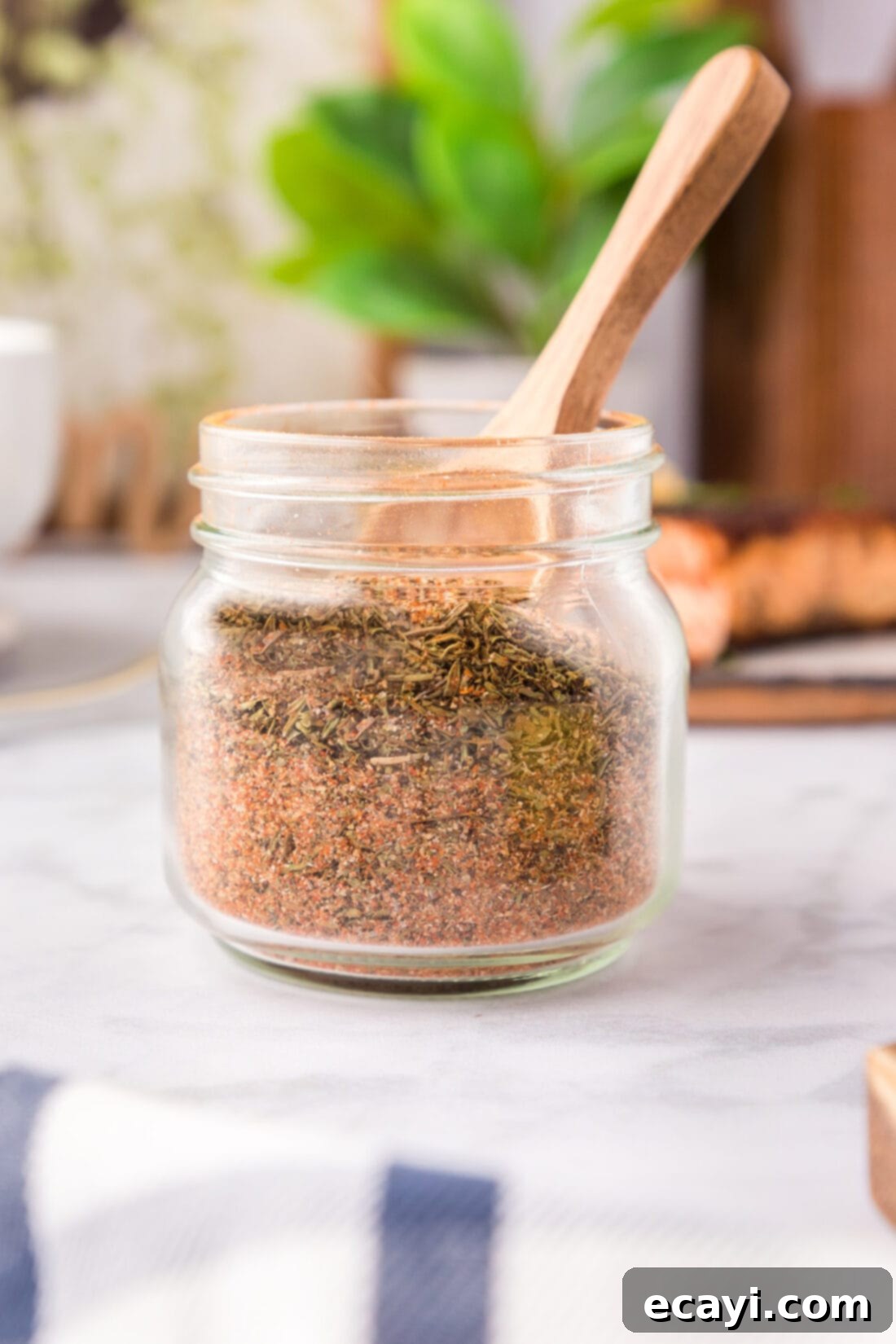
Essential Ingredients for Your Cajun Spice Blend
Creating this authentic Cajun seasoning is surprisingly simple, requiring just a handful of staple spices you likely already have in your pantry. For precise measurements and step-by-step instructions, refer to the printable recipe card at the conclusion of this post.
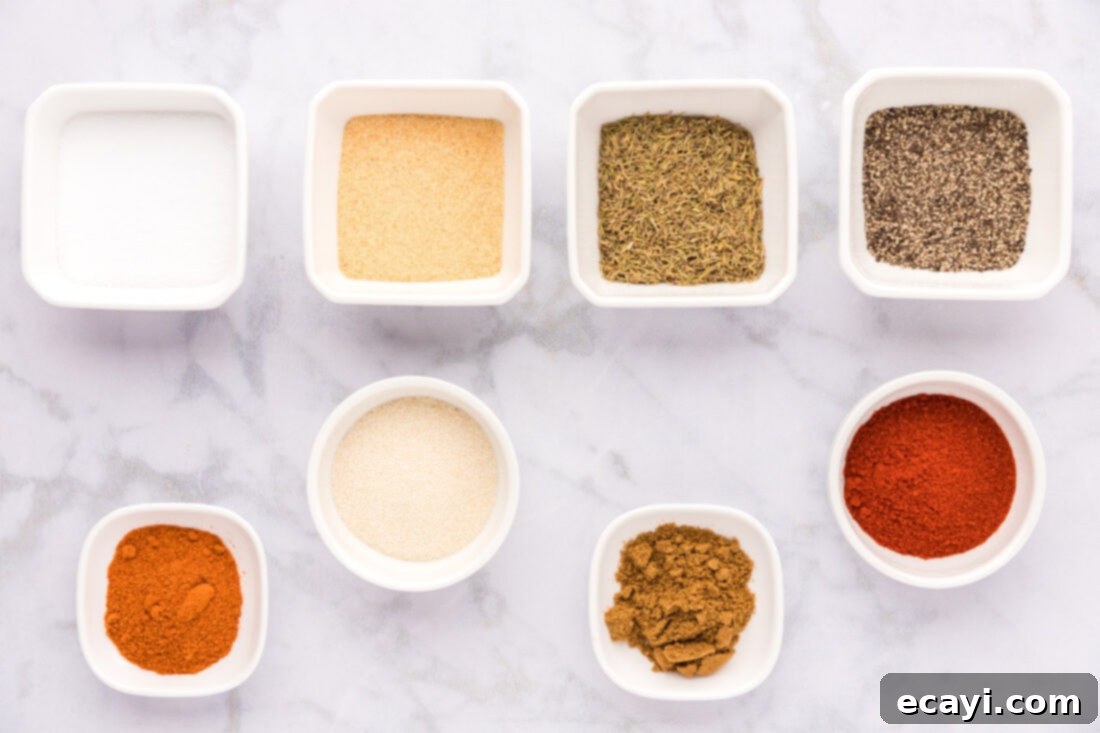
Ingredient Breakdown and Customization Tips
The magic of this Cajun seasoning lies in the synergistic blend of its individual components. Each spice plays a vital role in creating that signature bold, savory, and subtly fiery profile. Here’s a closer look at the key players and how you can adapt them:
SEASONINGS:
- Salt: A foundational element that enhances all other flavors. Our recipe calls for a specific amount, but you have full flexibility. If you’re mindful of sodium, reduce it by ½ to 1 Tablespoon. Conversely, if you’re seasoning a large quantity of food or prefer a saltier kick, you can slightly increase it.
- Black Pepper: Provides a sharp, pungent warmth that complements the other spices. Freshly ground black pepper will always offer the best flavor.
- Garlic Powder: Delivers a sweet, aromatic garlic essence without the moisture or intensity of fresh garlic. It’s essential for that savory depth.
- Dried Thyme: An earthy, slightly minty herb that is characteristic of Cajun and Creole cuisine, adding a herbaceous note that balances the spicier elements.
- Paprika: Contributes a beautiful reddish hue and a mild, sweet, peppery flavor. While regular paprika is good, consider using smoked paprika for an added layer of smoky depth, or hot paprika if you want a subtle heat boost without relying solely on cayenne.
- Onion Powder: Similar to garlic powder, this provides a savory, aromatic onion flavor in a convenient, dry form, rounding out the savory base.
- Ground Cumin: Adds an earthy, warm, and slightly pungent note, contributing to the seasoning’s overall complexity and depth.
- Cayenne Pepper: This is where the heat comes from! Our recipe provides a balanced amount, but your kitchen is your laboratory. For extra fire, add an additional ½ to 1 teaspoon (or even more!) of cayenne. If you prefer a milder blend, simply reduce the quantity. For an alternative, you could also use red pepper flakes for a different texture and a slower release of heat.
Substitution Suggestions and Further Customization:
Don’t be afraid to make this recipe truly your own! Beyond adjusting heat and salt, consider these additions:
- White Pepper: For a different kind of heat and a less visible speckle, especially in lighter-colored dishes.
- Dried Oregano: Another herb often found in Cajun blends, it can add a slightly bitter, peppery note.
- Celery Seed or Celery Salt: Provides a distinct, earthy, and slightly bitter flavor that is a hallmark of many Southern and Creole dishes. If using celery salt, remember to reduce the amount of regular salt accordingly.
- Mustard Powder: Offers a subtle tang and a slight bite that can enhance the overall profile.
The beauty of homemade seasoning is this flexibility – feel free to experiment with small batches until you discover your perfect blend!
Effortless Preparation: Making Your Own Cajun Seasoning
These step-by-step photos and instructions are here to help you visualize how to make this recipe. You can Jump to Recipe to get the printable version of this recipe, complete with measurements and instructions at the bottom.
Making this Cajun seasoning is incredibly straightforward and takes mere minutes. There’s no cooking involved, just simple mixing:
- Combine All Ingredients: In a medium-sized bowl, simply add all the measured spices. Use a whisk or a spoon to thoroughly combine them. Ensure there are no clumps and that the spices are evenly distributed for consistent flavor. This is key for every spoonful to deliver the full Cajun experience.
- Store Properly: Once blended, transfer the seasoning mix into an airtight container. A small mason jar with a tight-fitting lid or a plastic zipper bag works perfectly. Store it in a cool, dry, and dark place (like a pantry or spice cabinet) away from direct sunlight and heat. When stored correctly, your homemade Cajun seasoning will maintain its vibrant flavor and aroma for up to 1 year, ready to bring a taste of Louisiana to your table whenever inspiration strikes.
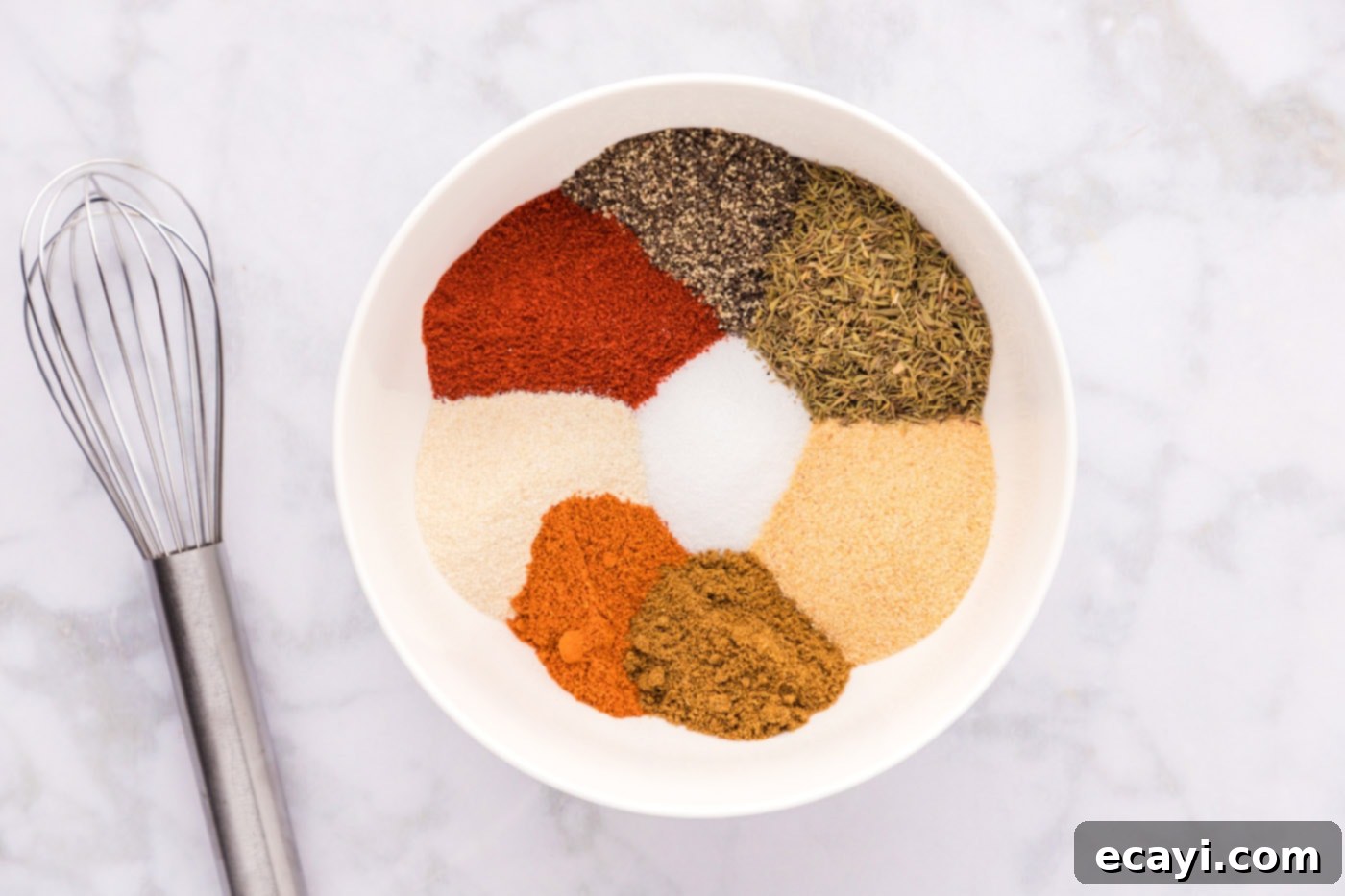
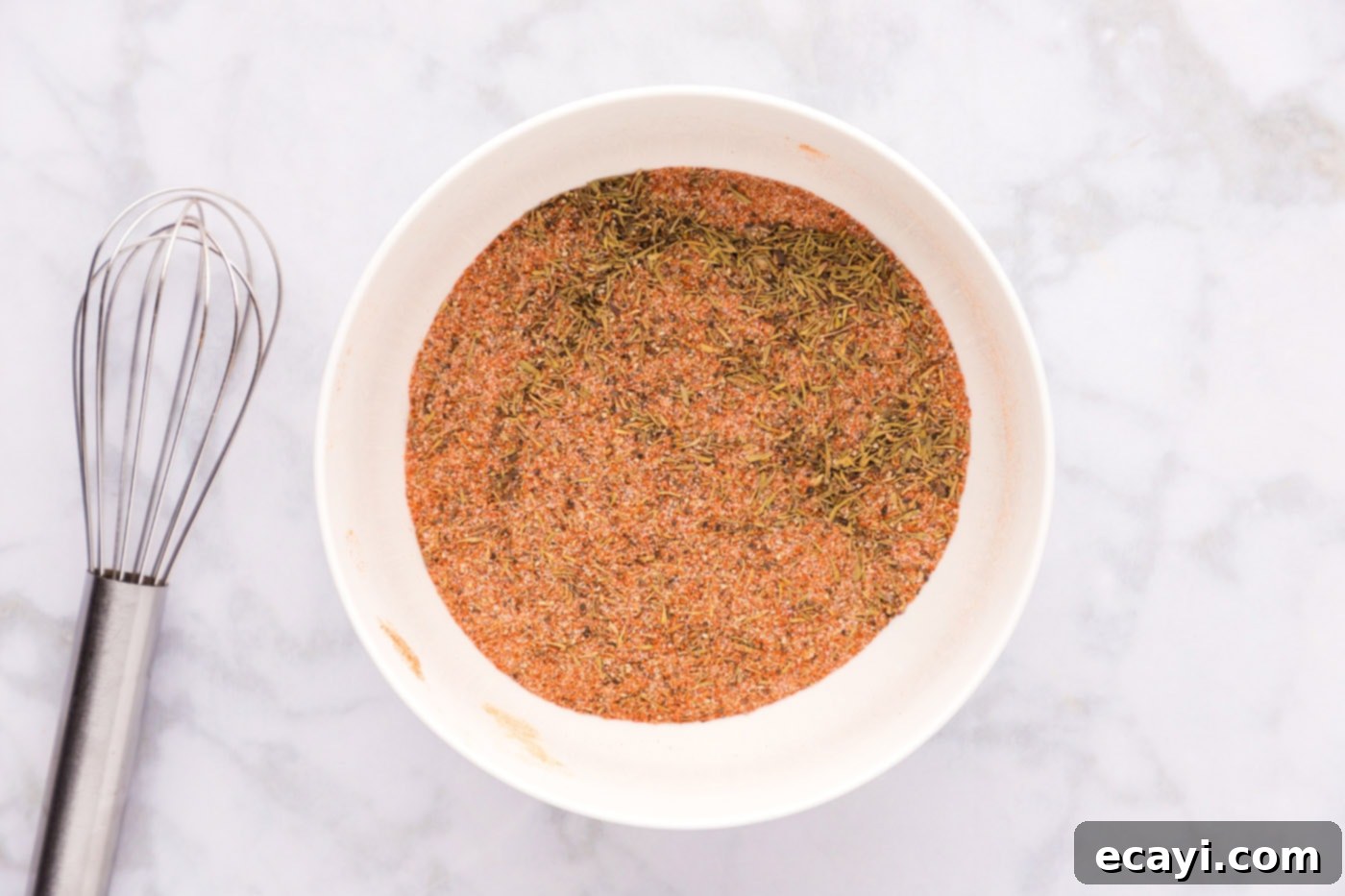
Frequently Asked Questions & Expert Tips for Perfect Cajun Seasoning
This recipe is ideal for meal prepping and storing for future use. To ensure maximum freshness and potency, transfer your freshly made Cajun seasoning into an airtight container. Options include a plastic zipper sandwich bag with all air squeezed out, or preferably, a glass container like a small mason jar or any spice jar with a tight lid. Store it in a cool, dry, and dark place, such as your pantry or a dedicated spice cabinet, away from heat and direct sunlight. Proper storage will keep your seasoning fresh and flavorful for up to 1 year.
While both Cajun and Creole cuisines originate from Louisiana and share many similarities, their seasonings have distinct characteristics. Cajun seasoning is generally simpler and spicier, relying heavily on pepper (black, white, cayenne) and garlic, with fewer herbs. It often reflects the rustic, country-style cooking of Acadians. Creole seasoning, on the other hand, tends to be more herbaceous and complex, often incorporating a wider array of dried herbs like oregano, basil, and bay leaf, in addition to the peppers and garlic. It reflects the richer, urban melting pot of New Orleans cuisine.
Yes, for an even deeper flavor profile, you can start with whole spices (like black peppercorns, cumin seeds, and whole dried thyme) and lightly toast them in a dry pan before grinding them with a spice grinder or mortar and pestle. This process releases their aromatic oils, intensifying their flavor. However, for convenience and consistent results, the recipe uses pre-ground spices.
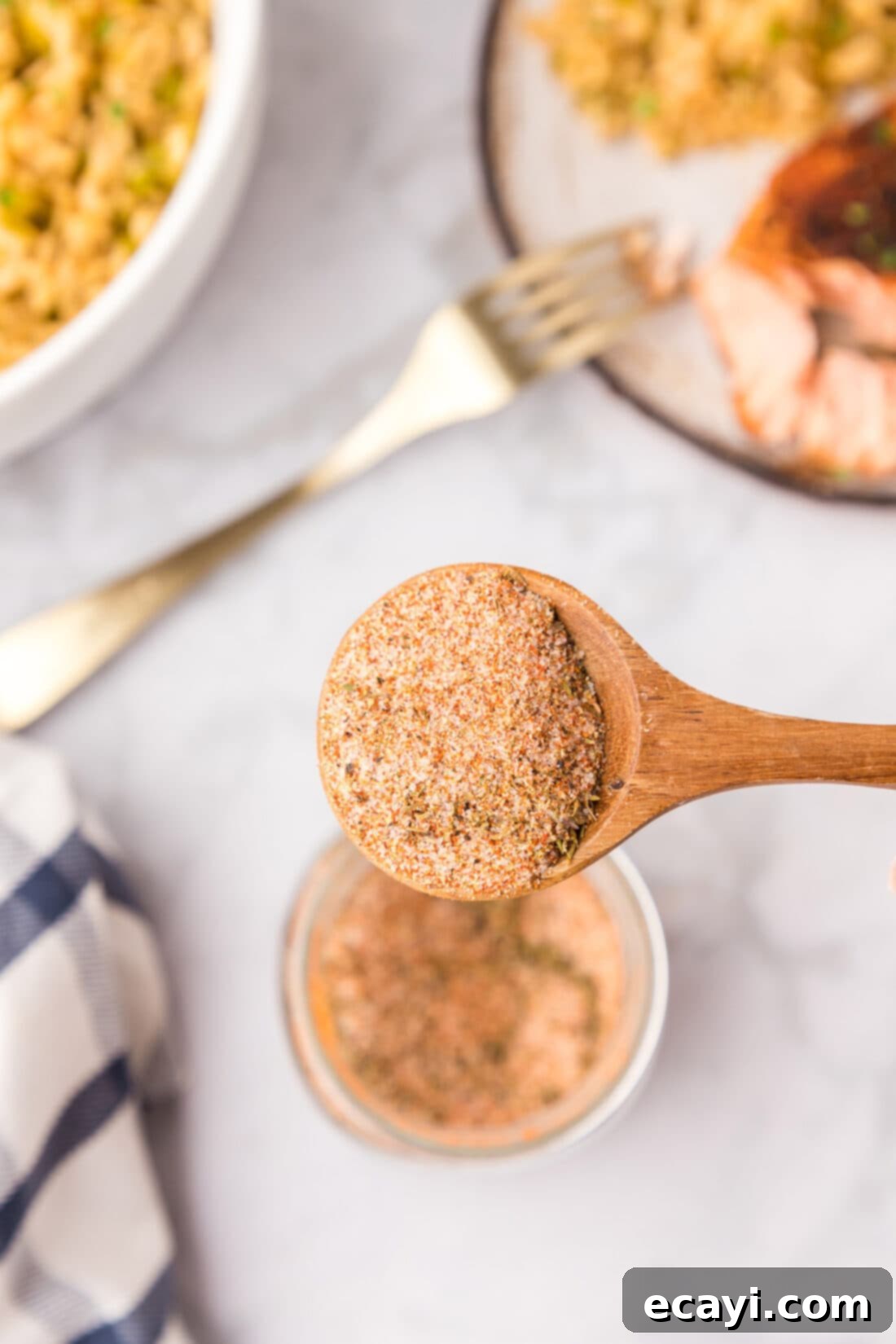
Versatile Serving Suggestions for Cajun Seasoning
The beauty of this homemade Cajun seasoning lies in its incredible versatility. It’s not just for classic Louisiana dishes; it can elevate almost any meal with its bold, aromatic, and spicy kick. Here are countless ways to incorporate it into your cooking:
- Proteins: It’s a fantastic rub for chicken (especially blackened chicken, grilled, or baked), beef (steaks, burgers, roasts), pork (chops, tenderloin), and seafood (shrimp, fish, crawfish). Try sprinkling it on tofu or tempeh before pan-frying or baking for a plant-based Cajun delight.
- Vegetables: Toss roasted vegetables like potatoes, broccoli, cauliflower, bell peppers, or corn with a generous amount of Cajun seasoning before roasting for an explosion of flavor. It’s also delicious on steamed green beans or asparagus.
- Carbs and Grains: Stir it into rice dishes, especially when making dirty rice or a simple rice pilaf. Sprinkle it on french fries, baked potatoes, or sweet potato fries. It adds a wonderful depth to pasta dishes like Cajun Chicken Pasta.
- Soups, Stews, and Chili: This seasoning is an absolute must-have for authentic gumbos, etouffees, jambalayas (try this recipe!), and even your favorite chili recipe for a Southern twist.
- Sauces, Dips, and Dressings: Mix it into mayonnaise, sour cream, or yogurt to create a zesty dipping sauce for fries, raw veggies, or sandwiches. Whisk it into salad dressings, or use it as a base for marinades and dry rubs.
- Breakfast and Brunch: Sprinkle a little on scrambled eggs, omelets, or breakfast potatoes for a spicy morning boost.
- Snacks: For a quick savory snack, toss it with popcorn or roasted nuts. It also adds a unique twist to homemade crackers or breadsticks.
From simple weekday dinners to elaborate weekend feasts, this homemade Cajun seasoning is your secret weapon for infusing deep, complex flavors into every bite.
Classic Dishes That Sing with Cajun Seasoning
While extremely versatile, Cajun seasoning truly shines in these iconic Southern dishes:
- Jambalaya
- Blackened Chicken
- Cajun Chicken Pasta
- Fried Green Tomatoes
- Cajun Red Beans and Rice
- Cajun Shrimp and Grits
- Crawfish Etouffee
- Gumbo
- Dirty Rice
- Spicy Roasted Okra
I love to bake and cook and share my kitchen experience with all of you! Remembering to come back each day can be tough, that’s why I offer a convenient newsletter every time a new recipe posts. Simply subscribe and start receiving your free daily recipes!
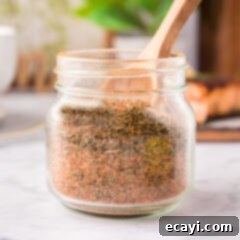
Cajun Seasoning
IMPORTANT – There are often Frequently Asked Questions within the blog post that you may find helpful. Simply scroll back up to read them!
Print It
Pin It
Rate It
Save ItSaved!
Ingredients
- 3 teaspoons salt
- 2 Tablespoons black pepper
- 2 Tablespoons garlic powder
- 3 Tablespoons dried thyme
- 4 teaspoons paprika
- 4 teaspoons onion powder
- 2 teaspoons ground cumin
- 2 teaspoons cayenne pepper
Things You’ll Need
-
Small mason jar
Before You Begin
- This recipe is perfect for prepping ahead and storing for future use. To store, you can either use a plastic zipper sandwich bag or an air-tight container such as a mason jar. Store at room temperature in a cool, dry place for up to 1 year.
Instructions
-
Combine all ingredients in a bowl and mix thoroughly. Transfer the blend to an airtight container and store in a cool, dry place for up to 1 year.
Nutrition
The recipes on this blog are tested with a conventional gas oven and gas stovetop. It’s important to note that some ovens, especially as they age, can cook and bake inconsistently. Using an inexpensive oven thermometer can assure you that your oven is truly heating to the proper temperature. If you use a toaster oven or countertop oven, please keep in mind that they may not distribute heat the same as a conventional full sized oven and you may need to adjust your cooking/baking times. In the case of recipes made with a pressure cooker, air fryer, slow cooker, or other appliance, a link to the appliances we use is listed within each respective recipe. For baking recipes where measurements are given by weight, please note that results may not be the same if cups are used instead, and we can’t guarantee success with that method.
